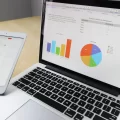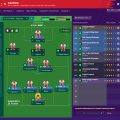Long gone are the days when all the data you could get about a football match was the number of goals scored. Now, there are stats to track just about anything you can imagine. From the percentage of the game played in specific areas of the pitch to how many ground duels your favourite player won.
The sheer volume of data collected from a single football match is nothing short of incredible. It’s used by clubs to optimise things like recruitment, training and tactics, and has become an integral part of modern football management. How exactly is this data collected? Find out here.
What is Event Data?
When talking about the use of data in football, the term event data is commonly used. Event data is simply an umbrella term that refers to all of the data collected across an entire match.
Think of everything that happens during a football match. Not just every kick of the ball, but every player’s position and movement and every action taken, be it a pass, block, interception, or save. These are the kinds of things event data tracks and records.
Data collection has proved revolutionary for the football industry. Fans can now dive deep into the performance of their team and individual players and can scrutinise performances to an unprecedented degree.
After a game, you can check to see how much possession your team had and in which areas of the pitch. You can see which players provided the most in terms of passing, with stats for both pass success and accuracy. The options are limitless, you could spend hours pouring over the data from a single game, if you were so inclined.
Football data has also changed how betting apps work. You can now place wagers on a huge range of different things, from big, game-changing incidents to small, seemingly inconsequential moments, even make live bets as the event is in progress.
How is Event Data Collected?
How is this event data collected? There is far too much happening during a football match for one or even a team of people to observe and note everything manually.
Instead, a highly trained team of expert data analysts use a dedicated system of advanced cameras to monitor the entire game. This network of cameras records absolutely everything, capturing high-quality footage of events as they unfold on the pitch.
Much of this data needs to be transmitted as it is being recorded to TV broadcasters and betting firms. To ensure all the data is accurate, a dedicated quality control analyst is present. They will review absolutely everything before the data is distributed to ensure there are no errors.
After the game, all of the recorded footage is studied by a team of analysts. They check for accuracy and use what they have recorded to compile more detailed analytics insights and reports, which can then be distributed among organisations such as football clubs and broadcasters.
How is Football Data Used?
Data has revolutionised the way in which clubs operate. They can use it to optimise recruitment, ensuring they are only bringing in players who will address specific gaps and deficiencies in the team. Data can also be used to improve training. Clubs can analyse data to analyse weaknesses in individual players and the team as a whole and then focus on addressing these issues on the training pitch.
Broadcasters can also use data to provide more detailed analyses and breakdowns for viewers on post-match shows. Match of the Day, for example, attracts millions of viewers by offering detailed post-match analysis with a focus on stats and data.
Conclusion
Data has completely transformed the world of football and its influence is growing by the day. We can expect to see data collected across an increasing number of metrics as more organisations come to understand the benefits it can offer.







